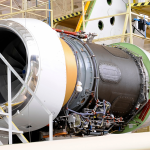Magnets in Aerospace Engineering, Part Two
In a recent blog post, we discussed the various applications of magnets in aerospace engineering. We focused on the beneficial properties of permanent magnets, how neodymium magnets are helpful in this industry, and ways samarium cobalt magnets are implemented. In this blog post, we’re looking closely at electric motors and how magnetics will impact this evolving aerospace industry.
The Current Aerospace Industry
Currently, electric generators and motors are used in aerospace engineering to convert electrical energy into mechanical energy. This means that generators and motors are heavily reliant on the interaction of permanent magnets on a rotor system. Before aerospace companies started using electric motors, many used hydraulic systems. Today, many aerospace companies are still working on shifting from hydraulic systems to electric motors. Because companies are still making a change, magnetic technology is increasingly important.. Today, electromagnetic components are used in electric motors and generators in a variety of aerospace applications. For instance, electromagnetic components are used in cabin air compressors to compress air and mix it with fuel and ignite it. Electromagnetic components also take the portion of the compressed air that doesn’t make it in the chamber, also known as bleed air, through valves to reach other areas of the aircraft, which is used for cabin pressurization and de-icing.Why Permanent Magnets are Ideal
Permanent magnets have been implemented in many revolutionary innovations such as electric vehicles and autonomous vehicles because of their advantageous properties. On a larger scale, such as air crafts, shifting to electric motors are also ideal because of their properties including:- Low maintenance
- Energy efficiency
- Quiet operation
- Portability
- Energy to weight ratio
- Reliability
- Torque control

